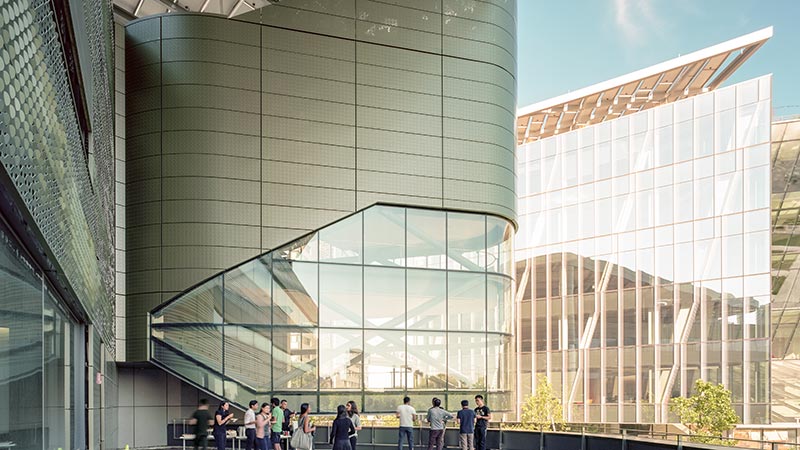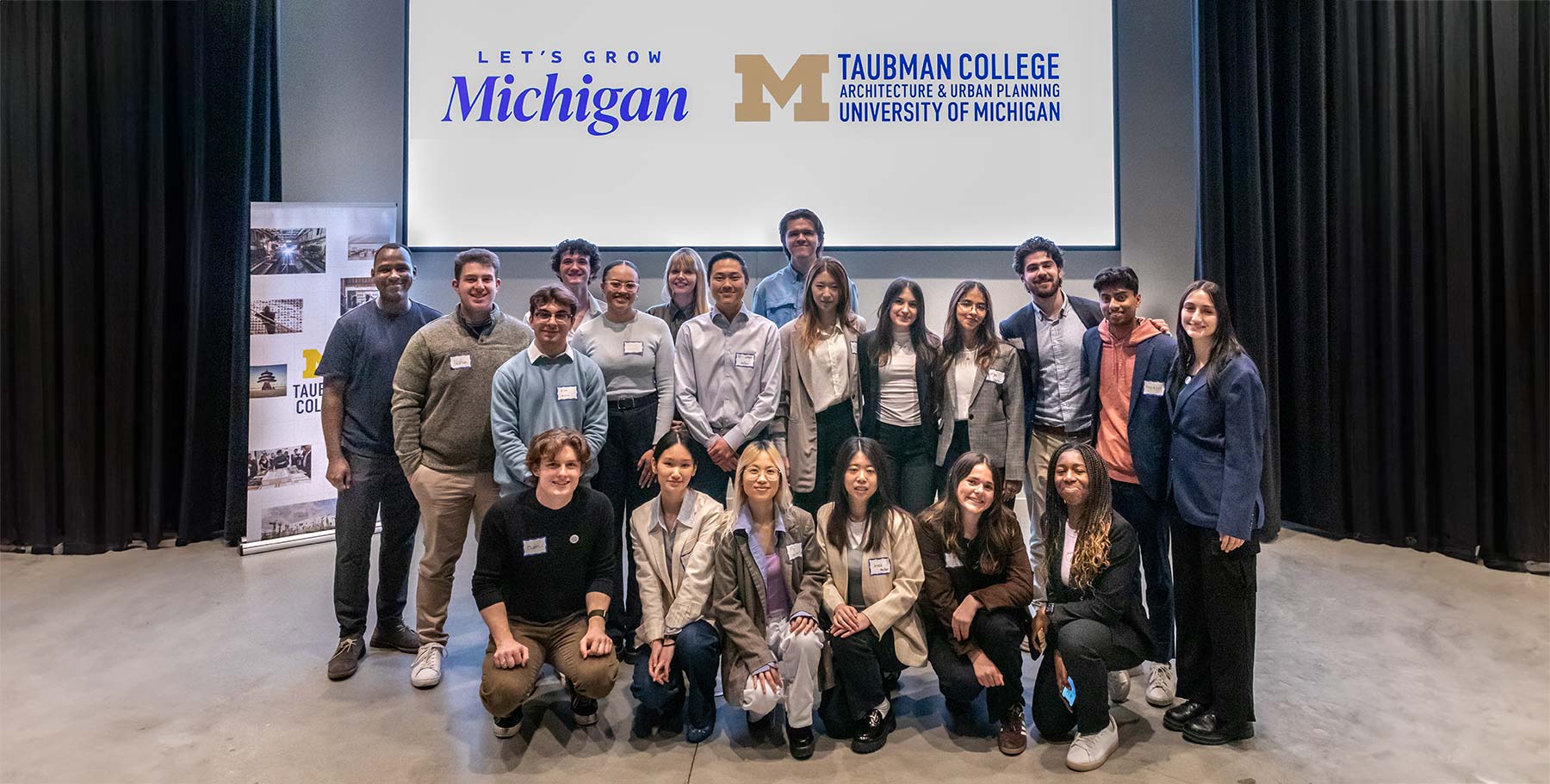You never know where a good idea can lead.
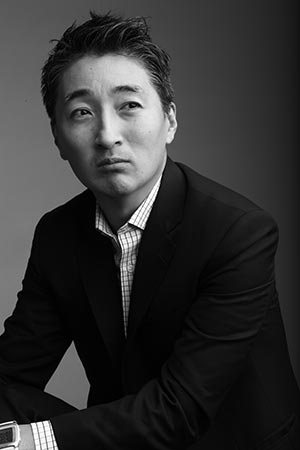 Although he didn’t know it at the time, the idea that changed the trajectory of Ung-Joo Scott Lee’s career came when he was a student in the three-year M.Arch program at Taubman College. Lee, M.Arch ’96, was serving as an editor of the 10th edition of Dimensions, the college’s student-produced architecture journal, when an exhibition at the college piqued his interest: it was by the Los Angeles firm Morphosis about the early computational efforts of their Diamond Ranch High School design — a project that would go on to win the National Honor Award from the American Institute of Architects.
Although he didn’t know it at the time, the idea that changed the trajectory of Ung-Joo Scott Lee’s career came when he was a student in the three-year M.Arch program at Taubman College. Lee, M.Arch ’96, was serving as an editor of the 10th edition of Dimensions, the college’s student-produced architecture journal, when an exhibition at the college piqued his interest: it was by the Los Angeles firm Morphosis about the early computational efforts of their Diamond Ranch High School design — a project that would go on to win the National Honor Award from the American Institute of Architects.
Lee thought a piece about the project should be published in Dimensions, and he worked with the firm to make it happen.
As he job hunted back home in Los Angeles after graduation, the connections he had made at Morphosis — as well as the knowledge of books, fonts, typesetting, and paper that had served him well as the Dimensions layout editor — converged in a serendipitous way. Morphosis was embarking on the publication of its third monograph and needed someone to lead the project. “I can directly attribute my first job to my experience at Michigan,” says Lee. “Once I was at Morphosis, the office began getting busier and things rolled from there.”
That might be an understatement. Today, Lee is a partner at Morphosis. He left the firm in 2000 when he relocated to New York; he rejoined them in 2007 when they opened their New York office. He now runs the firm’s daily operations in New York and has been involved in several of its most high-profile projects.
“I love the fact that even though I’m involved in a lot of high-level leadership decisions, I’m also still sketching, talking to the designers, and making things,” Lee says. “I wouldn’t be able to operate any other way.”
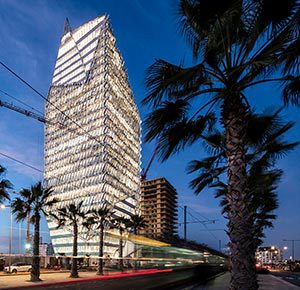 Lee was project principal for the Casablanca Finance City Tower, a 398-foot-tall, 226,000-square-foot structure that serves as the centerpiece of the city’s special economic zone. As the first tower in this new business hub, which was created on the site of a former airport, Morphosis felt it must illustrate Morocco’s vision for the future while at the same time raising the bar for building performance and relationship to the environment.
Lee was project principal for the Casablanca Finance City Tower, a 398-foot-tall, 226,000-square-foot structure that serves as the centerpiece of the city’s special economic zone. As the first tower in this new business hub, which was created on the site of a former airport, Morphosis felt it must illustrate Morocco’s vision for the future while at the same time raising the bar for building performance and relationship to the environment.
“No building exists on its own, so a project should always connect to some element of its surroundings,” Lee says. In this case, he explains, “it’s a simple building in the middle; the action happens on the top and the bottom.”
The top of the building represents a crown, a nod to its importance in Casablanca’s rapidly modernizing skyline. The lower part of the building, which narrows in a way that mirrors the top, minimizes the footprint of the tower, thus increasing the public space surrounding the building.
Executing a project in a developing nation provided unique opportunities and challenges for Lee and his team. Much of the fabrication for the building happened in Italy, since technologies and facilities were insufficient at the local level. Lee says it can be tricky to find the balance between keeping a local project local and making sure the resources are available to make it successful.
“We have a responsibility to build up local trades with the projects we do. But when we’re working on projects all over the world, we have access to technology that isn’t available everywhere,” Lee says. “In this case, while the fabrication took place elsewhere, we brought the assembly to local tradesmen, so they could be vested in our project and apply what they learned to future projects.”
Lee says the project represents his and his team’s learning about West African culture — and for Lee, who was born in South Korea and spent a large chunk of his childhood in Brazil, the more opportunities to immerse in other cultures, the better. “Some people experience the world through food or music; I get to experience it through architecture,” he says.
Living and working all over the world has taught Lee the multiplicity of perspectives that can affect any situation, including design. “At some point, you have to make a decision based on the best available information and a bit of your intuition,” he says. “Everybody these days expects a final answer. Sometimes you have to be comfortable leaving things unresolved.”
Closer to home, Lee was project principal for the Bloomberg Center, the net-zero, LEED Platinum main academic building for the new Cornell Tech campus on Roosevelt Island in New York.
“We set out to prove that a net-zero building was, from a work environment point of view, much better than a non-net-zero building,” Lee says. While people might associate net zero with low lights and limited capabilities because of energy-saving measures, “we showed it’s the opposite,” he explains. “If you’re doing net zero right, you have more energy for when you need it by saving it when you don’t.”
At the same time, he says that working on the design during Hurricane Sandy, the 2012 “superstorm” that battered the New York area, reinforced the importance of designing with a long view: “We really had to think hard about resiliency, knowing that there’s a climate crisis ahead that we were literally feeling the effects of at the project site.”
Lee’s current projects include the U.S. Port of Entry at Alexandria Bay, on the New York–Ontario, Canada, border. The project seeded Morphosis’s New York office when design began in 2008. With various bureaucratic and budget delays, construction on the $200 million facility is slated to finish in 2022. One mid-scale project currently underway is the 85,000-square-foot new home of the University of South Florida’s honors college. On a smaller scale, the firm is just finishing a design for new electric vehicle car chargers for Genesis at seven sites in South Korea. The plan is to deploy the design elsewhere in the world once it’s successfully launched there.
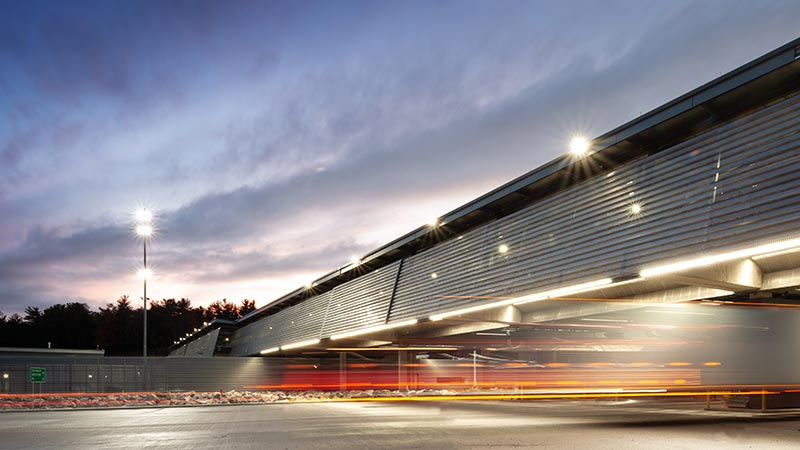
U.S. Port of Entry at Alexandria Bay, New York
“It’s almost like product design. It’s a small-scale canopy, and it’s turning out really nicely,” Lee says of the Genesis project. “At the same time, there’s an innate interest for us to keep the office working on interesting global projects at the very large scale.” The challenge, he notes, is to retain the studio setting at the heart of the firm’s culture: “We want to operate and do work at a large scale, but we want to feel like a small office culturally. Of course, we have to be competitive. There’s a lot of great architects doing amazing work. But when I think about what we want to be and how we look in the future, the heart of it all is good design and keeping a culture of studio.”
That studio culture gave Lee the exposure and confidence to grow from an entry-level monograph editor to the upper-management design leader he is now. He enjoyed the “mixed bag” of the studio culture at Michigan, born from the professors’ different approaches. In his early days with Morphosis in LA, “every project was a learning experience,” he says. “But the biggest influence was working alongside our founding partner, Thom Mayne, and getting a glimpse of how he thinks and how to work collaboratively within a culture of innovation.”
When Lee considers his career arc from the Art and Architecture Building to the top of the ranks at a hot firm known around the world, “It kinda feels like one long, great studio.”
— Amy Spooner

